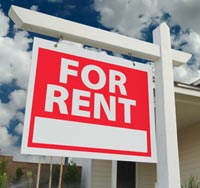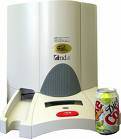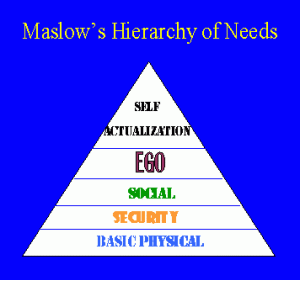– Dylan Thomas
In the 1920’s, T.S. Eliot ended “The Hollow Men” with:
“This is the way the world ends
Not with a bang but a whimper.”
This became a philosophy of aging for 20th Century generations. The senior living / care industry offered protective living environments to meet the expectations of these generations as they aged with increasing physical and/or mental frailties.
 BUT the 21st Century is a different world and the bobby-soxers (born 1935 – 1945) and baby-boomers won’t be satisfied to simply fade into the sunsetas their parents and grandparents did. They won’t “go gentle into that good night” and the senior living industry must evolve to meet the increased demands of these future generations.
BUT the 21st Century is a different world and the bobby-soxers (born 1935 – 1945) and baby-boomers won’t be satisfied to simply fade into the sunsetas their parents and grandparents did. They won’t “go gentle into that good night” and the senior living industry must evolve to meet the increased demands of these future generations.
Today’s senior living communities were designed to provide care and services for “The Greatest Generation” [1]and/or their parents. These individuals lived through the Great Depression and were molded by the experiences of World War II. They worked hard and made a better life for their children who often became the first in their family to attend college. Frequently, they worked for the same companies their entire career and were rewarded with generous retirement packages, including lifetime health benefits. Others built their own businesses, anticipating that their children would join and then succeed them in operating the company. In either scenario, the parents were expected to retire with their productivity and significant contributions to society at an end.
The general message from the adult children and even the government has been:
You’ve done enough. Just sit back and let us take care of you.
Medicare and related programs in the mid-1960’s created the funding for the development of modern health services to “insure” adequate care for these elderly. Nursing homes and home health evolved from cottage businesses into professionally managed multi-million dollar industries. Assisted living, independent living and investor owned CCRC’s developed to supplement non-profit (primarily church-related) life care communities and traditional “old folks” homes.
Operators built self-contained communities and assured residents that all their needs could be handled within these enclaves. Food and shelter, security and transportation for essentials such as doctor appointments[2] were provided. Activity programs were scheduled to entertain and fill the residents’ days.
Today, prospective residents are told that their worries will be over if they agree to move-in and pay an all-inclusive fee. Concerns about meals, cleaning and maintaining the house and yard, or paying insurance and utilities, etc. are eliminated. Depending on the type of facility, care needs may be provided directly by facility staff or arranged with private caregivers / home health companies.
This comprehensive approach led one resident in a recent Tennessean article[3]tostate: “They really take good care of me here. . . They do everything for you. They would even make my bed if I wanted them to, but I said ‘No, I want to do something.’”

Progressive Dependency
This chart demonstrates the loss of independence and increasing dependence on caregivers as the senior progresses through varying levels of care.
For individuals who experienced the shortages and deprivations of the Depression and World War II, the value equation was fairly simple. They understood that the move to a senior living community was a compromise as their health and support needs increased. They were used to adapting so giving up some independence to receive service was an acceptable alternative and they were willing to live with restrictions such as standard meals at set times.
However, these generations are dwindling – e.g. World War II veterans are dying at the rate of 1000 per day. [4] The replacement generations do not appear as willing to accept this one-size-fits-all-mentality.
 The industry has seen quarterly declines in average occupancy for more than 2 years with blame placed largely on the economy and specifically the real estate market. It’s time for a wake-up call if the industry wants to rebound from this census slump. Another hidden (or ignored) factor is the “changing of the guard” with new demand models and demographics for today’s aging population.
The industry has seen quarterly declines in average occupancy for more than 2 years with blame placed largely on the economy and specifically the real estate market. It’s time for a wake-up call if the industry wants to rebound from this census slump. Another hidden (or ignored) factor is the “changing of the guard” with new demand models and demographics for today’s aging population.
There currently seems to be an over-riding preference for “Aging in Place”. The Tennessean[5] states: “Despite more alternatives than ever, the overwhelming majority of elder Americans choose to age in place — in their own home, within the communities where they have lived for decades or have family ties.”
At some stage in the aging process, however, staying at home may NOT be the best option. Health and care needs, financial considerations, safety concerns, marital situation, housing condition, proximity of family members and the availability of caregivers and other components of a strong support system are factors that will impact this evaluation.
Yet, many senior specialists[6] note that the elderly will often stay in their own home until a “crisis” arises. As a result, the senior is often “placed” in a higher level-of-care than required, with an unneeded loss of independence.
This is obviously not the best for the resident. Could a senior living community do something differently to encourage the individual to move in earlier?
First, recognize that today’s aging population demands more than three meals a day and the “3-B’s activity program” – i.e. bingo, bible and birthdays. They are not willing to retire their egos when they stop working. They desire many more active and productive years with the ability to control their own destiny.
Focus on lifestyle vs real estate. A HOUSE is an “object that can be bought and sold” while a HOME has “meaning and attachment to … personal living space” that can’t be “bought or sold”.[7] It takes more than living in a Taj Mahal to generate enough value to prompt a move-in.
Apply a scientific approach to the structure and organization of daily activities for the residents. Utilize Maslow’s theory and healthy aging concepts to challenge the residents to continue to age gracefully, achieve new successes and “CREATE PRECIOUS MEMORIES”. Treat the residents with dignity and respect by developing imaginative programs that stimulate and challenge their mind, body and spirit, going beyond the kindergarten style Summer Camp for Seniors[8] or cruise ship mentality.
Become familiar with the research about the negative impact isolation has on aging and couple this with Maslow’s need for socialization to develop a powerful marketing tool – offering a SOLUTION for potential residents and, especially, their adult children.
Revise marketing strategies to include education about your scientific approach and other 21st Century initiatives. Use these to differentiate your community from the competition, AND eliminate prior perceptions.
Train staff to PROMOTE INDEPENDENCE by “helping” residents with their activities of daily living, but not “doing it for them!” A former resident related an incident where she was made to feel “helpless and incapable” because, at an outing, “everyone tried to get food for me as if I couldn’t do things for myself.”[9]
Finally, accept that the new generation is guided by the words of Dylan Thomas:
“Do not go gentle into that good night,
Old age should burn and rave at close of day;
Rage, rage against the dying of the light.”
[1]Tom Brokaw, 1998.
[2] Maslow refers to these as “basic” needs in his Hierarchy of Needs. Select “Maslow” in the CATEGORIES drop-down box to access additional articles dealing with differing levels of needs.
[3] “Facilities offer convenience and care” by Jessica Bliss, 12/27/2009.
[4] Associated Press, May 24, 2008
[5] “Elderly forgo assisted living – opt to stay at home” by Jessica Bliss, 12/27/2009
[6] Click on this link to review comments posted in the Senior Care Services Companies group on LinkedIN.
[7] Courtesy of Jason Popko.
[8] By Ellen Brandt, Ph.D., August 1, 2009 on the Ellen Interactive blog.
[9] Essay by Betty Warren, Hickory, NC, 2006
 It’s the late 1960’s. The war in Vietnam is escalating and college campuses are erupting in violence across the country. Then comes the quintessential coming-of-age film with a young, drifting college graduate fulfilling an adolescent fantasy by being seduced by an older woman. This film was the springboard for stardom for Dustin Hoffman and “Mrs. Robinson” became a chart-topper and Grammy Award winner for Simon & Garfunkel.
It’s the late 1960’s. The war in Vietnam is escalating and college campuses are erupting in violence across the country. Then comes the quintessential coming-of-age film with a young, drifting college graduate fulfilling an adolescent fantasy by being seduced by an older woman. This film was the springboard for stardom for Dustin Hoffman and “Mrs. Robinson” became a chart-topper and Grammy Award winner for Simon & Garfunkel. George Takei Billy Dee Williams
George Takei Billy Dee Williams






















 CEO of IBM (1942)
CEO of IBM (1942)































 Will the industry re-bound with a business-as-usual mentality? Will new generations of customers be satisfied with today’s level of service?
Will the industry re-bound with a business-as-usual mentality? Will new generations of customers be satisfied with today’s level of service?  A study several years ago indicated that up to 80% of AL admissions were driven by the need for assistance with medication management. Yet, there are now numerous automated medication reminder systems for use in the home.
A study several years ago indicated that up to 80% of AL admissions were driven by the need for assistance with medication management. Yet, there are now numerous automated medication reminder systems for use in the home.